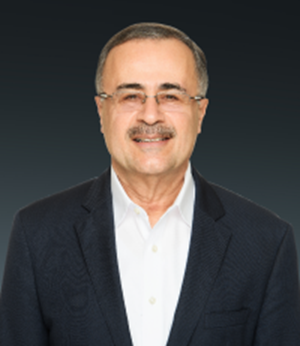CERAWeek by S&P Global 2024: Leadership dialogue by Amin Nasser, Saudi Aramco
(WO) – CERAWeek by S&P Global kicked off on March 18th, hosted by the Hilton Americas hotel in Houston, Texas for the 2024 session. One of the opening Leadership Dialogues featured President and CEO Amin H. Nasser, of Saudi Aramco, who began by addressing the current demand for “energy that helps protect the planet” while also being cheap and readily available. Yet the strategies in place are “visibly failing” amidst the hard realities of energy demand, which he noted is expected to rise to an all-time high just in the second half of 2024 alone. Gas, in particular, is anticipated to grow by nearly 70% by the next century.
Further, the events of recent years have caused various governments and entities to acknowledge the issues that oil and gas supply security—or rather, lack thereof—pose. Mr. Nasser stressed the impact of conflict as a disruptive factor, both in reference to the earlier invasion of Ukraine as well as the more recent conflict in the Middle East. Saudi Aramco, he noted, enjoys a certain measure of flexibility, thanks to established infrastructure that allows it to bypass the routes disrupted by Russia’s invasion of Ukraine. From that more secure position, the company plans to maintain 12MMbbl of production as of writing, but the Saudi Aramco executive pointed out that not all entities in the region enjoy that same flexibility. Instead, these other exporters are faced with the difficulties that shipping via water entails, including delays in route resolution and increased insurance costs.
In Mr. Nasser’s view, reducing emissions is not effective when energy demand could be reduced instead. He referenced coal versus LNG as just one specific point that would benefit from such a focus on meeting demand, as well as reduce greenhouse gas emissions. Mr. Nasser noted that the world needs an energy transition that is flexible, supportive of greenhouse gas reduction and affordable. That last item is especially crucial, in light of the many nations who cannot afford expensive energy transition solutions.
As a specific example, Mr. Nasser brought up blue hydrogen and its varying $200–400 per oil barrel equivalent price tag. For Aramco, the company saw significant growth in development sectors for green and blue hydrogen, with considerable investment thus far for the energy source, which is more predictable than solar and wind. As of writing, the company is investing in wind and solar renewables as well. Nevertheless, Mr. Nasser stressed the importance of governmental incentives and subsidies within the broader conversation; he noted that construction for mega-projects requires significant incentives to begin work—otherwise, it is uneconomical to start at all. Mr. Nasser noted a similar problem in another sector: without government subsidy to ease the expense, EVs can be up to 50% more expensive than their counterparts, which discourages adoption of the technology.
Nevertheless, the Aramco executive was optimistic in the brief Q&A session that followed his opening remarks. He touched on a variety of renewable energy projects, as well as emissions reductions projects and emphasized Saudi Aramco’s commitment to investing in these areas. The company continues to invest in solar, wind and blue hydrogen, with a new organization focused on these efforts, within the broader company structure, that Mr. Nasser says will eventually stand separate from Aramco. Funding for this organization and its efforts is set to increase from $2.5 billion in spending to $4 billion, in order to provide the venture capital needed for project startup and deployment. Mr. Nasser also noted the opportunity that AI presents as a means of cutting costs and reducing emissions as well, and while huge investment is still needed, the company already boasts two of the top supercomputers in the world, with plans for a third in the works.



